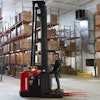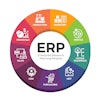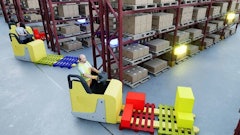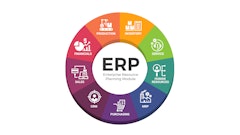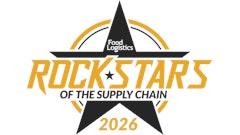
Reusable packaging such as plastic totes and pallets will play an increasingly larger role in supply chain operations, especially as companies continue focusing on sustainability, waste elimination and improving operational efficiency.
Plastic totes and plastic pallets provide superior durability, enhanced hygienic standards and long-term reusability and are a suitable option for manufacturers seeking to reduce their environmental impact.
Defining supply chain impact is a key step when converting to reusable totes and pallets and requires:
• A multi-pronged approach that involves understanding the goals of the end user
• Determining KPIs (key performance indicators)
• Implementing solutions based on real-time data insights that drive ROI (return on investment)
Understanding the goals of the end user
What an end user is looking to accomplish can vary based on the industry. Take for example e-commerce (online direct-to-consumer) and food distribution (restaurants, grocery stores, convenience stores). The value of transitioning from single- or limited-use packaging to reusable packaging, like totes and pallets in these industries is completely different.
In the e-commerce market, you might see an automated system using wood pallets or cardboard boxes in the automated storage and retrieval system (ASRS) that can cause downtime or issues with debris caught in the conveyance systems. There’s also a potential risk to worker safety if a pallet is substandard and collapses, which could also lead to product damage.
You will face different goals in the food distribution, or downstream, scenario. These goals might include increasing the speed of picking or the delivery once product reaches a store. A smaller format reusable platform that delivers into stores or restaurants and directly into their coolers and freezers more quickly and efficiently might be a good solution in this instance.
Understanding these goals – the challenges customers have with their current platform, is crucial to recommending a reusable solution that is best for their specific operation.
Determining KPIs
While each industry may have its own specific KPIs, worker safety, warehouse productivity and product damage are KPIs that transcend multiple industries.
To go back to the e-commerce scenario, uptime – the number of times the ASRS breaks down or is hampered by using single-use packaging – could be used as a barometer. Meanwhile, a food distribution center will be interested in the number of cases picked per hour.
All these KPIs will feed into uncovering a problem that could be eliminated using reusable packaging. By transitioning to a reusable, nestable pallet, customers could improve selector efficiency, thereby increasing the number of cases picked per hour.
Note that there is not one single set of KPIs for success. Understanding industry-specific KPIs will enable you to uncover the best platform and see if it’s feasible for them.
Regardless of the industry, the most important KPI is knowing whether there is a viable way to get the returnable packaging back to your plant, distribution center, etc. to see ROI.
Implementing solutions based on real-time data insights that drive ROI
Let’s say that an e-commerce customer has an abundance of downtime in the ASRS system, kicking out wood pallets because of issues with sub-standard platforms, including deflections or broken stringers. The solution – a rackable plastic pallet or perhaps a pallet support board.
Collect real-time data such as downtime, product damage and workers’ compensation claims, then run a pilot with a small subset of pallets to see if uptime improves or if substandard pallets are being removed from the system. Then compare this data and extrapolate it over the entire system.
A best-case scenario for a food distribution system is piloting routes that go downstream, typically fitting 30 pallets per truck. One route would involve going through the process of loading using the existing packaging. For the next route, incorporate a reusable pallet and then note the differences in picking speed and speed in loading the trailers between the two routes. Then, layer this information over to other value buckets such as product damage, warehouse cleanliness and worker safety.
Based on this analysis, weigh the investment in a reusable option against the cost of maintaining the status quo and determine what the ROI looks like. You’re essentially taking all the operational metrics that you’re accustomed to looking at and then balancing it up against what could potentially be.
Some of this can be done in real time and in other instances you must draw conclusions based on what has historically happened when converting to reusable totes and pallets.
Best practices for sharing results
Armed with these results, it’s now time to share them with decision makers inside an organization. Start with a look-back. When developing an ROI assessment, share it with a customer so they can use it as their springboard for gaining an investment. About six months later, ask your customer how the solution stacks up against what was projected. You’re looking to see if they’ve seen reduced project damage and increased productivity, whether it’s in the ASRS system or general labor. From there, mirror those results to determine if the ROI was what we expected it to be.
This process is helpful as it provides a knowledge base to apply to other companies in similar industries.
Final thoughts
The companies that succeed in transitioning to reusable totes and pallets are those who approach the process with clarity and commitment. They recognize that this shift benefits people, the planet and the business as a whole.
It requires a mindset change that reusable packaging is a valuable company asset. These assets not only protect products but also enhance operational efficiency and employee safety — transforming them from “one more thing to track” into tools that drive long-term business improvement.


